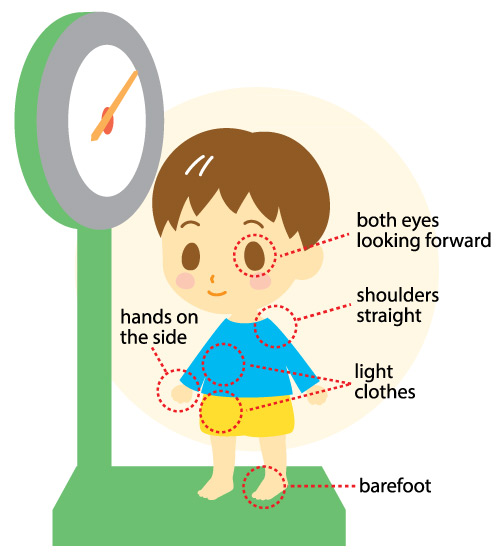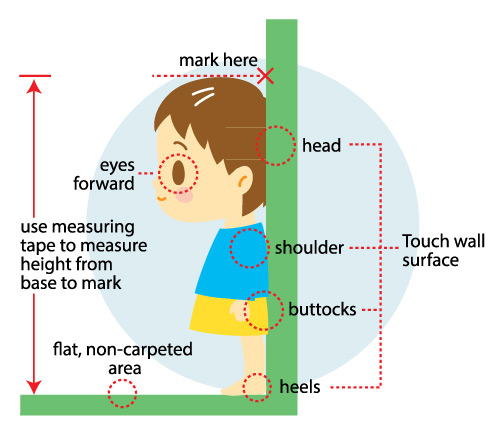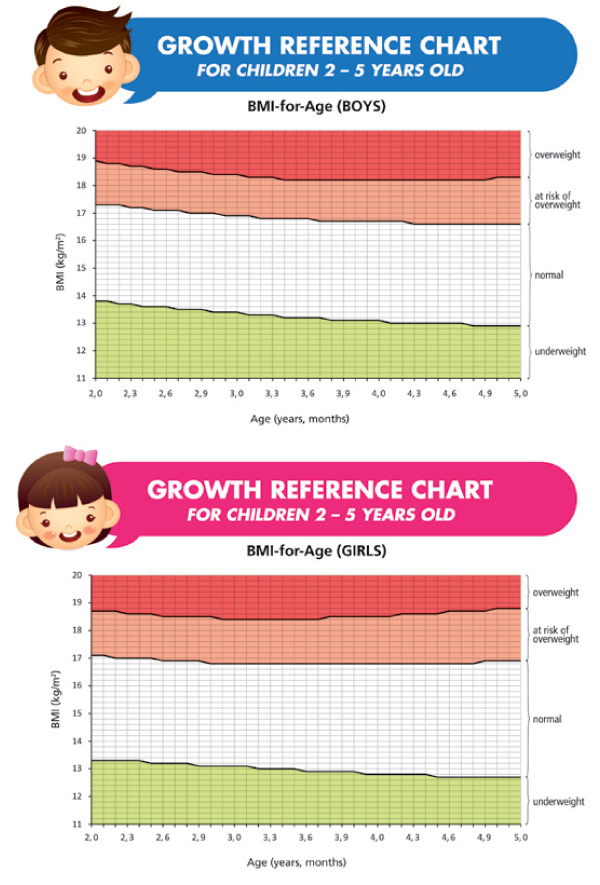The simplest and most effective way to find out whether your child is eating well and receiving optimal nutrition is to monitor his weight and height regularly. With these measurements, you can then calculate his Body Mass Index (BMI) and compare it with a growth standard by the World Health Organisation.
Knowing his BMI-for-age will enable you to determine whether your child is growing at an appropriate pace, or detect if he/she is underweight or overweight. It can also provide parents with reassurance about normality and help parents make better dietary and lifestyle decisions for their child.
Never determine if your child is growing right by comparing him with other children as they all grow at different rates into different heights and sizes.
Evaluating Growth
It’s recommended that you record your child’s Body Mass Index (BMI) and compare it against a growth standard at least every 6 months or so. Measuring your child’s physical growth is easy and it takes less than 10 minutes to do. Here’s how:
Part I: Calculating BMI
Step 1: Measure Weight

Step 2: Measure Height

Step 3: Calculate BMI

Many websites and mobile apps today provide child BMI calculators, you can use these but remember to use the ones from reputable sources (i.e. Nutriweb, WHO). Similarly, you can do this manually using this formula:
Part II: Interpreting BMI
Find your child’s BMI on the vertical axis and your child’s age on the horizontal axis of the chart.
Mark the point in which these two values meet.The growth chart is gender and age specific, so be sure you use the correct one for your child.
Why BMI?
BMI-for-age in childhood is a determinant of adulthood BMI and correlates with clinical risk factors of chronic diseases (i.e. cardiovascular diseases) later as adults (Source: WHO)
Every growth reference chart has different region which tells you what category your child’s BMI is:
- If his BMI is in the red region, he is “overweight.”
- If his BMI is in the pink region, he is “at risk of overweight.”
- If his BMI is in the white region, he is “normal weight.”
- A BMI in the yellow region indicate he is “underweight.”

WHAT TO DO?
For optimal growth and development, provide your child with a balance of various nutrients from different food groups. Similarly, you should also encourage regular physical activity and practice good eating habits (refer previous article “Good Nutrition for Growth”).
The growth charts are useful in monitoring growth of your child, but it isn’t necessarily a diagnostic tool. If your child is repeatedly not in the “normal weight” region after a few measurements, consult a paediatrician.






Comments